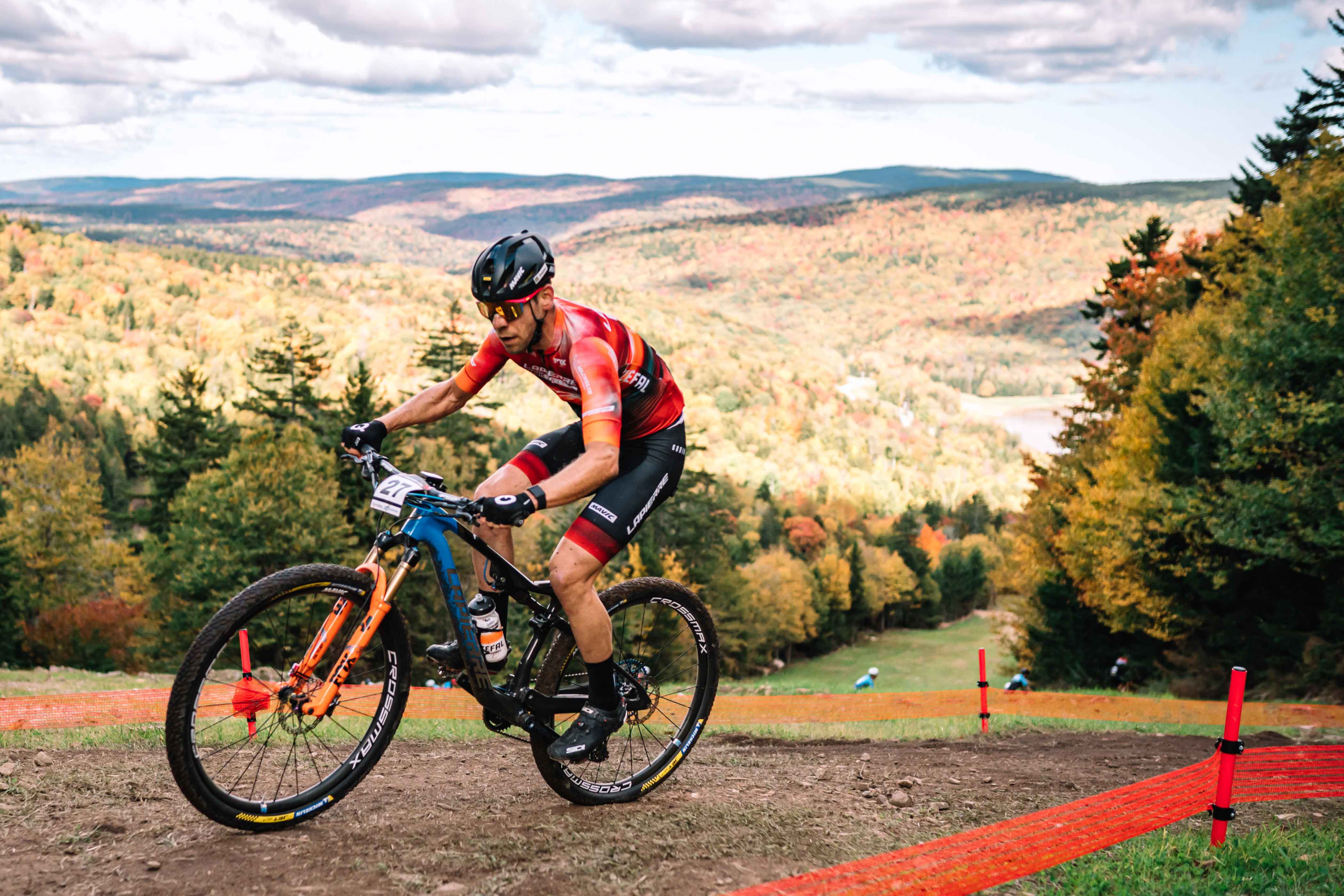.jpg)
Advice and tutorials
HOW TO FIND THE RIGHT MTB PRESSURE?
Inflating your tires incorrectly is like going for a run with your shoelaces untied: it's doable, but not without a certain difficulty... Mountain bike tire pressure not only determines your comfort, but also your riding performance, and there are lots of factors to take into account! So here's some advice on how to find the ideal pressure for your MTB tires.
Most of today's mountain bikes are fitted with 27'5" and 29" tires. First and foremost, we advise you to refer to the manufacturer's recommendations, often written on the tire's sidewall. It's also important to work on your tire pressure gradually, to find out what's best for your profile, because there's no such thing as a universal ideal pressure!
And for advice from the best, Antoine Orchampt, mechanic with the Lapierre Mavic Unity Team, and Thomas Litscher, Swiss XCC champion and XCO rider with Lapierre Mavic Unity, will be on hand to give you their personal tips!
The rider's weight
« When it comes to tire pressure, it depends first on the rider's weight, then on the race conditions and the tire section chosen » - Antoine Orchampt, Lapierre Mavic Unity mechanic
The rider's weight is the first thing to take into account when inflating MTB tires. The greater the weight, the higher the tire pressure. The opposite will cause the bike to sag on the tires, damaging them and, above all, increasing the risk of punctures.
We recommend a basic inflation of 1.8 bar for a rider weighing around 80 kilos, and 1.6 bar for a rider weighing around 60 kilos. We also recommend that the rear tire be slightly more inflated than the front (approx. 0.2 bar), as 60% of the rider's weight rests on the rear tire, compared with 40% on the front.
The type of MTB tire
An over-inflated tire will make your bike undriveable, while an under-inflated tire will impact your performance and riding precision, while increasing the risk of punctures.
The lower the pressure, the greater the comfort, grip and motricity of your bike. While the norm is often set at 2 bars, it is possible to go as low as you like, and still feel comfortable on your bike, while riding aggressively and smoothly. Note that tubeless tires allow you to ride with less pressure in the tire, as there's no risk of pinching the inner tube.
« Pressure necessarily differs from tube to tubeless. We can lower the pressure on a tubeless tire and get more grip, whereas with an inner tube, there's a risk of puncture when you lower the pressure. The advantage of tubeless tires is that they don't 'pinch' because the tire is empty inside » - Antoine Orchampt, Lapierre Mavic Unity mechanic
Weather and route
As Antoine mentioned, the weather also comes into play when inflating mountain bike tires. If the ground is muddy, it's advisable to lower tire pressure, to gain a little more grip than on a dry trail. But for several years now, another solution has been to slightly increase the pressure of your mountain bike tire to find grip under the layer of mud. It's up to you to decide what suits you best! Also, if the road is rocky, it may be necessary to increase the rear tire pressure a little to avoid hitting the rim (despite losing grip!).
As Thomas Litscher explains, he prefers to use a smaller section in the rain, which means he has to increase his tire pressure.
« With my Michelin Jet 2.35 tires, I run at 1.15 bar at the rear and 1.05 bar at the front with 30mm rims. When it rains, I change to a smaller tire with a 2.2 section and increase the pressure to 1.3 and 1.4 bar because I'm using 25mm rims. » - Thomas Litscher, Lapierre Mavic Unity rider

Riding style
Another criterion to consider is your riding style, as this will have an impact on your speed, your rhythm and the way you cross obstacles. If you're relatively aggressive with your bike, you'll need to increase the pressure of your mountain bike tires. If your riding is more refined, if you take long curves and avoid big obstacles, a lower pressure will be more pleasant.
« Each rider will have his own particularity. Those with an aggressive riding style will generally put on a little more pressure to avoid losing control in the turns, unlike a finer rider (like a feline in the technical parts) who will look for the limit of the tire to get the best possible grip without being afraid of losing control! » – Antoine Orchampt, Lapierre Mavic Unity mechanic
The right equipment for inflating MTB tires
To inflate your mountain bike tires to the right pressure, opt for the FP65 Z Switch foot pump and its precise digital pressure gauge! Alternatively, the Zéfal Mt. Mini pump will accompany you in the field if you need to re-inflate an under-inflated tire or puncture. Our pocket manometer, the Twin Graph, will also enable you to check your tire pressure efficiently.


